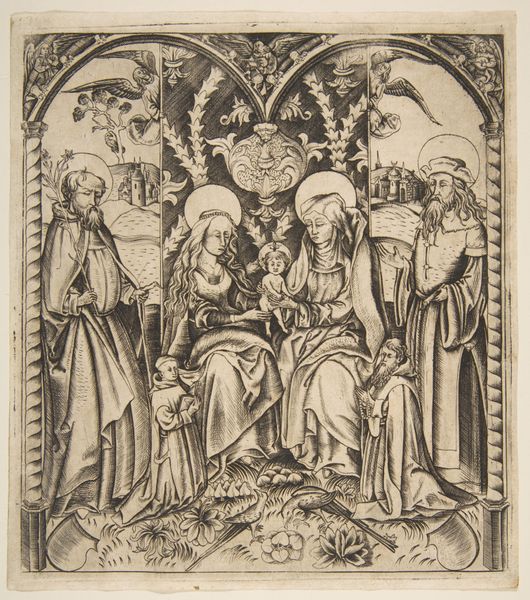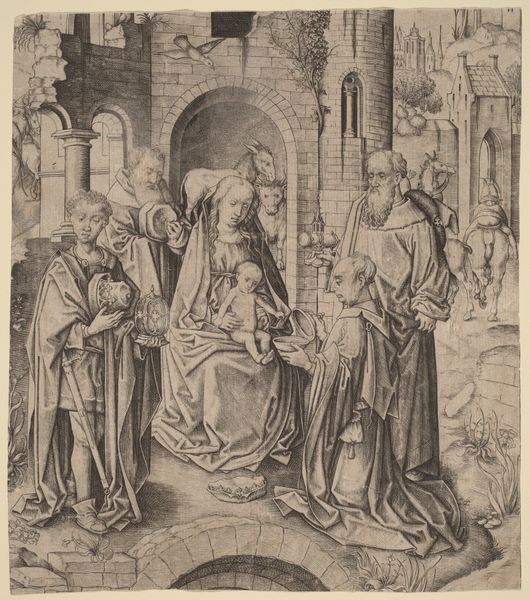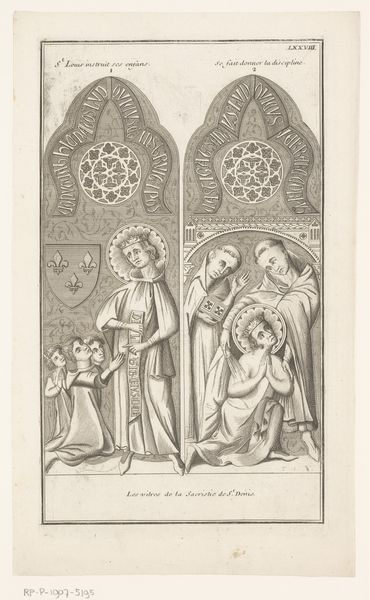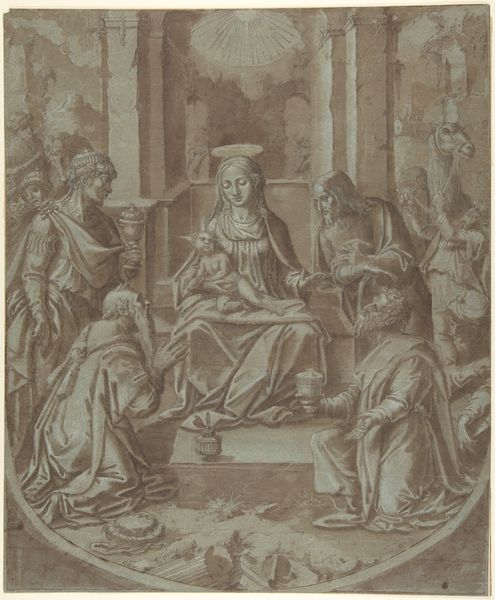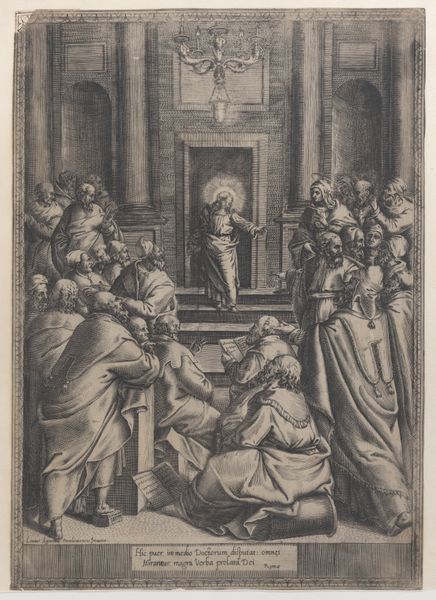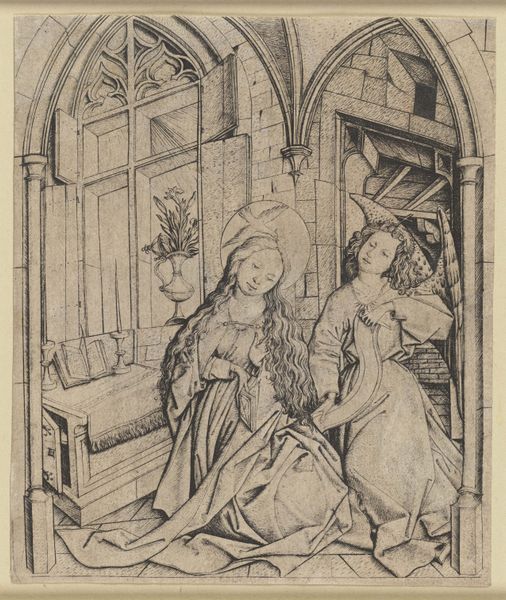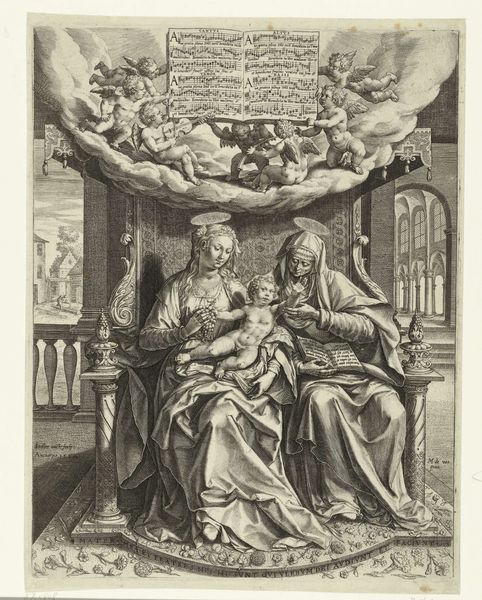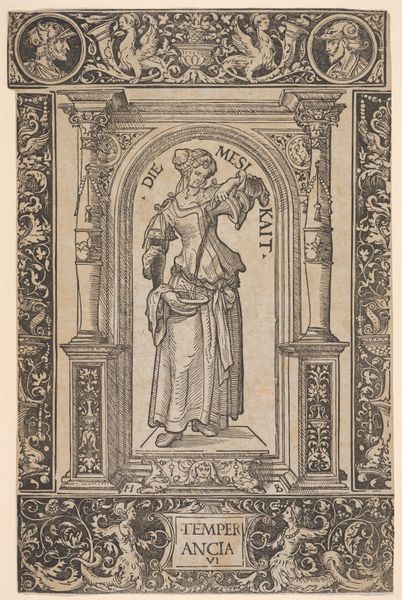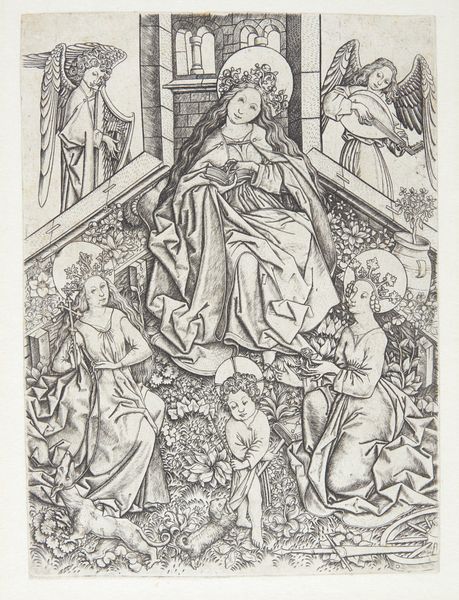
drawing, print
#
drawing
#
toned paper
#
ink drawing
#
pen drawing
# print
#
pen sketch
#
pencil sketch
#
junji ito style
#
pen-ink sketch
#
pen work
#
tattoo art
#
pencil art
#
virgin-mary
Dimensions: Sheet: 1 5/16 × 6 9/16 in. (3.3 × 16.7 cm)
Copyright: Public Domain
Editor: Right, let’s talk about Israhel van Meckenem’s "The Holy Family with St. Anne," a print rendered in ink on toned paper, dating from 1435 to 1503. The sheer level of detail in the line work is kind of astonishing, but there's a stiffness to the figures, don't you think? What do you see when you look at it? Curator: A fascinating dance between the earthly and the divine! The engraving feels almost dreamlike. The texture, built from tiny strokes, gives it such depth. Can you almost feel the quiet awe emanating from the scene, despite the, as you say, the relative "stiffness"? Perhaps we could think of that rigidity as reverance? What do you suppose Meckenem intended through that contrast, floating somewhere between worldly reality and transcendent idea? Editor: Reverence… interesting. I hadn’t considered it quite like that, but I see what you mean. Is it common to see such everyday-looking people in such divine imagery? Curator: Ah, good question. Notice how the faces, while possessing individuality, are also quite generalized? In his own day, Meckenem was one of the first artists to create, not portraits of celebrities, but accessible archetypes, and also among the first to actually sign all his works. He wasn’t simply interested in likeness but in distilling essences, maybe hoping others could make it their own…almost like a popular reproduction? Editor: So, in a way, he was making the divine more relatable through, as you say, approachable everyday folks? And he also had an eye on legacy…I get it now. Curator: Precisely! Maybe art is not a painting, a song, a movie…but something, in this case ink on paper, pointing us back to something else altogether. Editor: Huh. A reproduction *of* accessibility *for* reverence. Curator: Yes, you may be on to something big... perhaps a papercut from another, earlier wound of living, now become beautiful again.
Comments
No comments
Be the first to comment and join the conversation on the ultimate creative platform.
